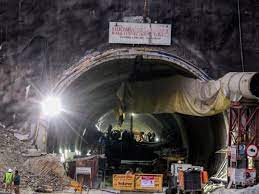In a remarkable 17-day rescue mission at Uttarakhand’s Silkyara-Barkot tunnel, workers trapped after a cave-in were successfully saved. The teamwork involved rat-hole miners and various agencies, showing great effort and collaboration.
This incident highlights a rare commitment to worker safety, often overlooked in the country. Clearing 57 meters of debris, with the last 12 meters manually cleared, showed the rescue’s challenging nature.
A Triumph of Teamwork
The key players included NDRF, its state counterpart, ONGC, the army’s Madras Sappers, and foreign experts, highlighting smooth coordination.
Yet, the success raises questions about the risk assessment of the Chardham Mahamarg Pariyojana (CMP). The risk to Silkyara-Barkot tunnel workers due to the lack of an escape route questions safety norms. CMP’s segmented approach, avoiding an overall environmental impact assessment, allowed the project to begin in a seismic zone without proper risk evaluation.
Lessons from the Uttarakhand Tunnel Rescue
India requires a significant improvement in its infrastructure. However, framing projects as a choice between development and the environment is misleading.
A crucial aspect is a comprehensive cost-benefit analysis that considers risks. Incidents along CMP highlight the shortsightedness of avoiding proper environmental impact assessments.
There’s still time to reevaluate CMP and make adjustments to address risks. This is the minimum effort we can make for the workers.




